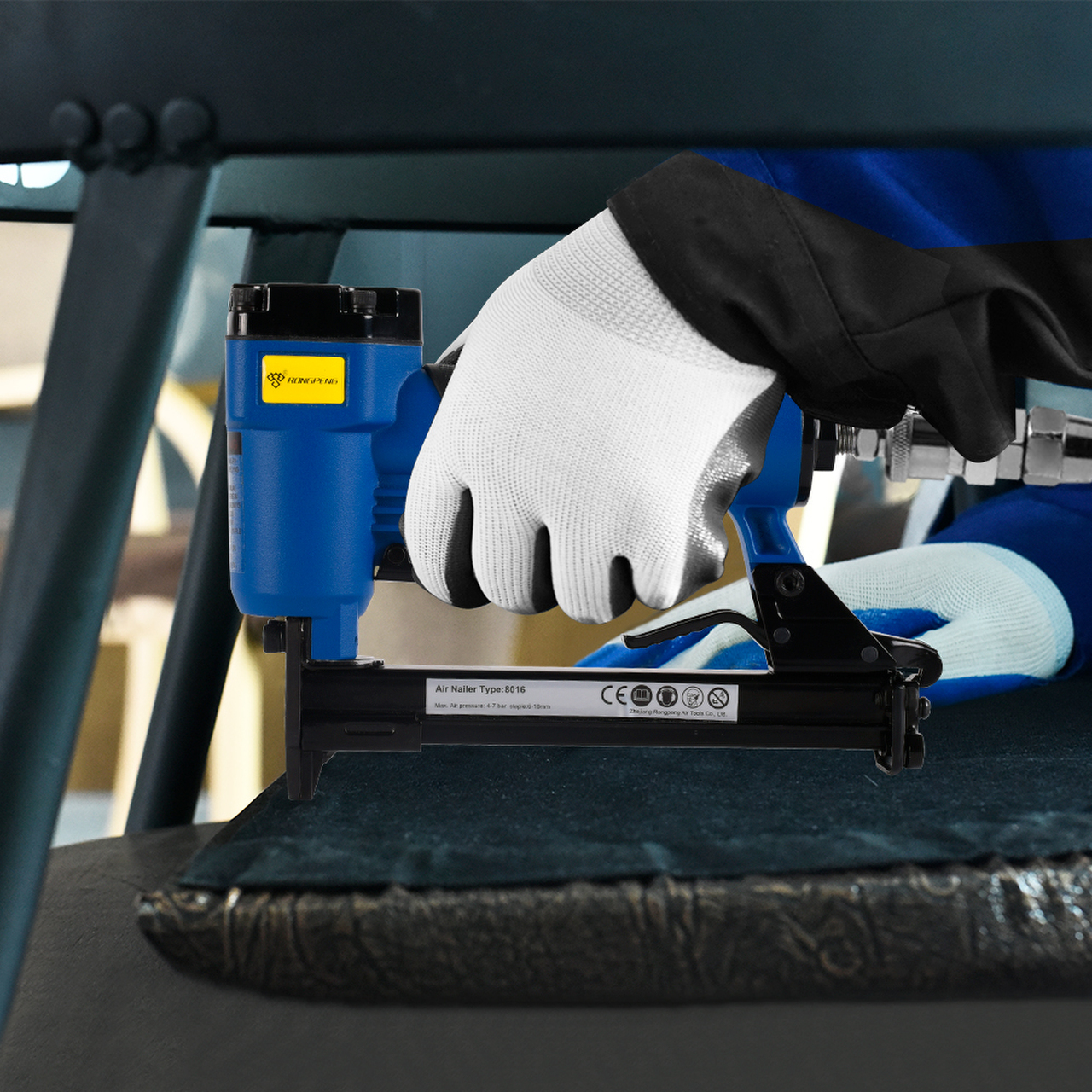

Maintaining your nail gun can greatly improve safety, extend its life and reduce costs. Below is a guide to maintaining your pneumatic nail gun, covering cleaning, lubrication, inspection and storage. By following these steps, you can extend the life of your tool and ensure consistent performance on every project.
1. Cleaning: The Basics of Nailer Maintenance
Dust, debris, and residue from nails and lubricants can accumulate inside a nail gun, causing misfires, jams and reduced efficiency. Regular cleaning is essential to preventing these problems.
Cleaning Process
Disconnect the air compressor: Always make sure the nail gun is disconnected from the air compressor.
Remove nails: Empty the magazine to make sure there are no nails in it.
Disassemble components: If the nail gun allows, disassemble parts such as the nozzle and magazine for easier access.
Brush and blow: Use a cleaning brush to remove dirt and debris from the exterior and interior components. For hard-to-reach areas, use compressed air to blow away accumulated dust. Pay special attention to the nailing area and firing mechanism.
Wipe: Use a clean cloth to remove any residue or oil left on all components.
Reassembly: Carefully reassemble the nail gun, making sure all parts are firmly in place.
Cleaning Frequency
For frequent users, monthly cleaning is recommended. Occasional users may choose to clean quarterly. However, always check the tool for debris buildup before each use.
RONGPENG DA64R)
2. Lubrication: Ensure smooth operation
Proper lubrication is essential for the smooth operation of the moving parts in the air nail gun. Over time, friction causes wear, which can lead to inefficiency and even tool failure.
Lubrication Steps
Apply Lubricant: Lubricate key parts such as the piston, nailer, and trigger mechanism with a lubricant specifically designed for air nailers. Apply 3-5 drops of lubricant to the air nozzle before each use.
Focus on moving parts: Make sure all moving parts are lightly coated with lubricant to prevent friction. Avoid over-lubrication, as excess lubricant can attract dust and debris.
Test Fire: After lubrication, test fire the air nail gun against a scrap material to ensure it is operating properly.
Lubrication Frequency
Lubricate your pneumatic nailer before every major project, or at least once a month when you use it regularly. If the tool is used frequently, reapply lubricant throughout the day.
(RONGPENG 8016)
3. Inspection and Troubleshooting
Regular inspections can help identify potential problems before they escalate into major issues.
Critical Inspection Areas
Loose Bolts and Screws: Check for any loose parts and tighten them immediately. Loose parts can cause vibrations and affect precision.
Hose Condition: Check the air hose for cracks, leaks, or damage. Replace if necessary to ensure steady airflow.
Seals and Gaskets: Damaged seals can cause power loss and inefficiency. Replace worn seals immediately.
Damaged Parts: Check for damaged parts, such as the trigger mechanism, magazine, or piston. Replace any damaged parts immediately.
Common Problems and Solutions
Stuck Nails: Usually caused by misaligned nails or debris in the magazine. Clear the stuck nails and make sure the nails are aligned.
Misfires: Usually caused by worn triggers or faulty firing mechanisms. Inspect and replace damaged parts.
 (RONGPENG Pallet nailer)
(RONGPENG Pallet nailer)
4. Storage and Safety Practices
Proper storage and handling practices are essential to extend tool life and ensure a safe work environment.
Storage Tips
Store nail guns in a dry, cool environment away from moisture and extreme temperatures.
Protect nail guns from dust and debris using airtight containers or tool boxes.
Store nails in their original packaging or in designated storage containers.
Safety Precautions
Always wear safety glasses and hearing protection when operating or cleaning nail guns.
Keep your finger off the trigger when not in use and never carry the tool by the trigger or hose.
Disconnect the air connection to the air nail gun when not in use or for maintenance.